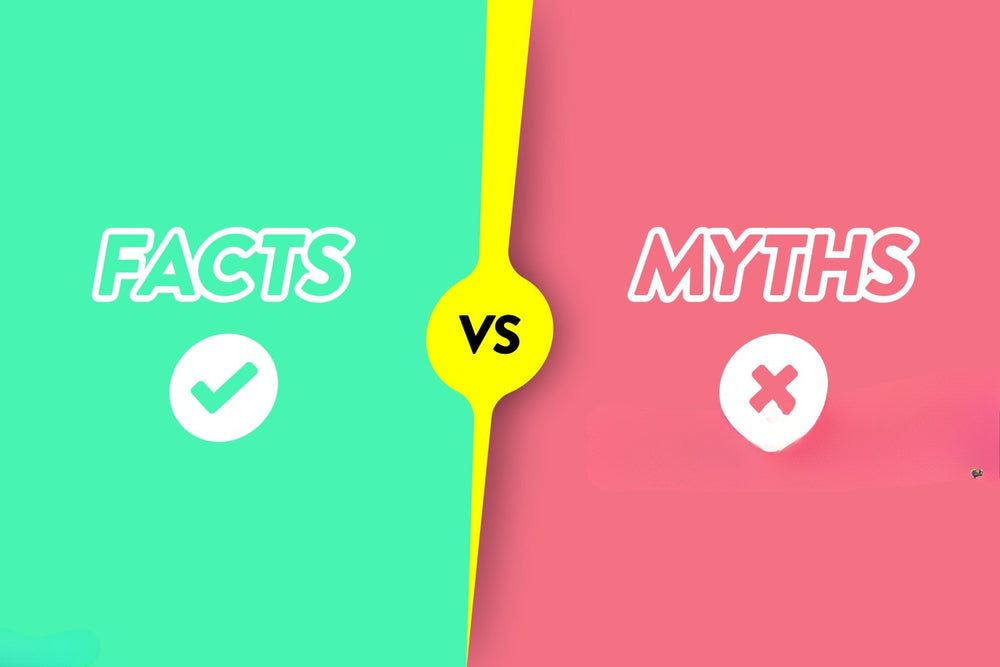Debunking Common Myths About Clear Aligners

Clear aligners have revolutionized orthodontic treatment, offering a nearly invisible alternative to traditional metal braces. Despite their growing popularity, many misconceptions persist about this modern teeth-straightening option. Let's separate fact from fiction by addressing some of the most common myths about clear aligners.
Myth #1: Clear Aligners Are Only Effective for Minor Dental Issues
Many people believe clear aligners can only correct slightly crooked teeth or minor spacing issues. However, advancements in aligner technology have significantly expanded their capabilities.
The Truth: Today's clear aligners can effectively treat a wide range of orthodontic issues, including:
- Moderate to severe crowding
- Spacing problems
- Overbites and underbites
- Crossbites
- Open bites
While there are still some complex cases that may benefit from traditional braces, clear aligners can address many of the same issues that metal braces can—often with comparable results.
Myth #2: Clear Aligners Take Longer Than Traditional Braces
Some people assume that because clear aligners appear less substantial than metal braces, they must take longer to achieve results.
The Truth: Treatment time with clear aligners is typically comparable to traditional braces, with average treatment ranging from 12-18 months. In some cases, particularly for minor corrections, clear aligner treatment can actually be faster. The key factors affecting treatment duration include:
- The complexity of your dental issues
- Your compliance with wearing aligners for the recommended 20-22 hours per day
- Following your orthodontist's instructions
Myth #3: Clear Aligners Are Much More Expensive Than Braces
Cost is often cited as a major drawback of clear aligner treatment.
The Truth: While the price point of some premium clear aligner brands can be higher than traditional braces, the overall cost difference has narrowed significantly. Many factors affect the final price:
- Many dental insurance plans now cover clear aligners at the same rate as traditional braces
- Dental offices often offer similar payment plans for both treatment options
- Direct-to-consumer aligner options have created more affordable alternatives (though these come with important considerations regarding supervision)
It's also worth considering the "hidden costs" of traditional braces, such as more frequent office visits and potential emergency appointments for broken brackets or wires.
Myth #4: Clear Aligners Are Uncomfortable and Difficult to Maintain
Some people worry that clear aligners will be painful or high-maintenance.
The Truth: While any orthodontic treatment involves some discomfort, particularly when beginning a new aligner set, most patients report that clear aligners are more comfortable than traditional braces. Unlike metal braces with protruding brackets and wires that can irritate cheeks and gums, clear aligners have smooth edges.
As for maintenance:
- Clear aligners are removable, making oral hygiene simpler—just brush and floss normally
- Cleaning aligners is straightforward with specialized cleaning solutions or simply brushing them with a soft toothbrush
- There are no food restrictions, as aligners are removed when eating
Myth #5: Clear Aligners Are Just a Cosmetic Solution
Some people dismiss clear aligners as merely a cosmetic alternative to "real" orthodontic treatment.
The Truth: Clear aligners are legitimate orthodontic devices that move teeth through precisely calculated force applications—just like traditional braces. Properly aligned teeth offer benefits beyond aesthetics:
- Improved bite function
- Reduced risk of abnormal wear on teeth
- Easier cleaning, potentially reducing risk of decay and gum disease
- Relief from jaw pain for some patients with bite issues
Myth #6: All Clear Aligner Brands Are Basically the Same
With the proliferation of clear aligner options, some assume they're all equivalent products.
The Truth: Clear aligner systems can differ significantly in terms of:
- The technology and materials used
- The treatment planning process
- The level of professional oversight
- Additional features like compliance indicators or attachments that enhance treatment
Professional in-office aligner treatment typically offers more comprehensive care, including in-person monitoring and the ability to make mid-course corrections. Direct-to-consumer options may be more affordable but generally provide less personalized treatment.
Myth #7: Clear Aligners Are Only for Adults
Many people assume clear aligners are exclusively for adults who want to avoid the appearance of metal braces.
The Truth: While adults do make up a significant portion of clear aligner patients, many teenagers are excellent candidates for this treatment option. Special teen aligner products often include:
- Compliance indicators to ensure proper wear time
- Eruption tabs to accommodate growing mouths and emerging molars
- Replacement aligners for lost or broken sets
For responsible teens who can commit to wearing their aligners consistently, clear aligners can be an excellent choice.
The Bottom Line
Clear aligners have evolved into a sophisticated orthodontic treatment option that can effectively address a wide range of dental issues. While they're not the right choice for everyone, many of the common myths about their effectiveness, comfort, and cost no longer hold true.
If you're considering orthodontic treatment, the best approach is to consult with an experienced orthodontist who can evaluate your specific needs and help you understand whether clear aligners are appropriate for your situation. With proper planning and compliance, clear aligners can provide an effective, convenient path to a beautifully aligned smile.

 AU
AU







